In today’s digital age, maintaining an organized workspace is crucial for productivity and focus. A desk cable organizer plays a pivotal role in achieving a clutter-free environment. Whether you’re working from home, managing a busy office, or simply aiming to streamline your personal workspace, understanding the benefits and varieties of desk cable organizers can significantly enhance your daily routine. This comprehensive guide delves into the world of desk cable organizers, offering insights on their types, benefits, and tips for choosing the perfect one for your needs.
Importance of Organizing Desk Cables
Organizing desk cables brings order and efficiency to any workspace. It reduces clutter, creating a clean and pleasant environment. Tidy cables also improve productivity by helping you focus on your tasks.
Messy cables can cause unnecessary stress and frustration. Tangled cords waste time when devices need reconnecting or troubleshooting. Organized cables save you from these challenges.
Moreover, cable organization enhances safety. Exposed wires or scattered cables can lead to tripping accidents. Proper management keeps them secure and out of harm’s way.
A neat cable setup also prolongs the durability of your cords and devices. Tangling and unnecessary straining reduce the lifespan of cables. By organizing them, you reduce wear and tear, saving money in the long run.
Lastly, cable organization is essential for aesthetic purposes. A tidy desk looks professional and welcoming. Whether at home or the office, it creates a positive impression on colleagues or guests.
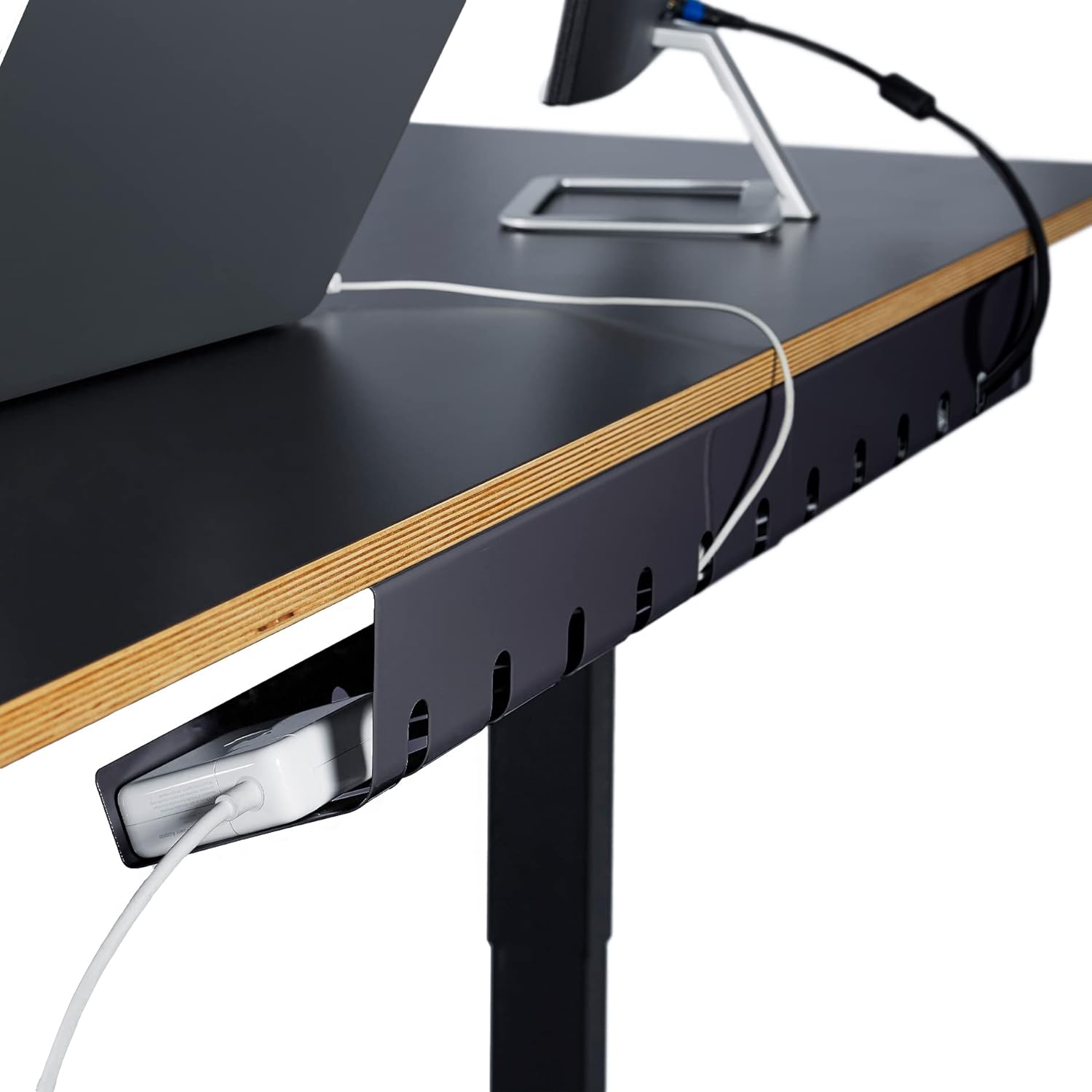 Common Problems Caused by Cable Clutter
Common Problems Caused by Cable Clutter
Cable clutter can lead to serious issues in your workspace. Here are some common problems:
Reduced Productivity
Tangled cables make reconnecting devices a hassle. Searching for the right cables wastes valuable time.
Safety Hazards
Loose cords can cause tripping accidents. Exposed wires may pose fire risks or electric shocks.
Device Damage
Overlapping or twisted cables can damage their outer coverings. This leads to costly replacements and repairs.
Poor Aesthetics
Messy cables create an unprofessional look. They can make your desk appear chaotic and unwelcoming.
Increased Stress
Seeing tangled cables daily creates frustration. Organizing them helps maintain a calm workspace.
Addressing these problems is crucial for workspace efficiency and safety. Use desk cable organizers to regain control over your setup.
Essential Tools and Accessories for Cable Management
Proper cable management needs the right tools and accessories. These can simplify the process and improve results. Below are essential items to consider:
Cable Ties
Cable ties hold cords together, reducing clutter instantly. They come in reusable and single-use options.
Cable Clips
Cable clips stick to surfaces and keep cables in place. They work well on desks and walls.
Cable Sleeves
Cable sleeves bundle multiple cords and protect them. They provide a clean and professional look.
Cable Boxes
Cable boxes hide messy wires and power strips. They prevent tangling and keep cords accessible.
Cord Labels
Cord labels help identify cables quickly. This avoids confusion during device setups or troubleshooting.
Surge Protectors with Organized Outlets
Surge protectors with spaced-out outlets reduce overlapping cables. They enhance safety and organization.
Under-Desk Cable Trays
Under-desk cable trays hold cords vertically. They free up space and hide clutter effectively.
Adhesive Hooks
Adhesive hooks secure cords to surfaces. Use them to route cables along walls or behind desks.
Wire Management Channels
Wire management channels tuck cables into a streamlined path. These help conceal cords seamlessly.
Investing in these tools promotes neatness, safety, and productivity. Choose items that suit your workspace and cable needs.
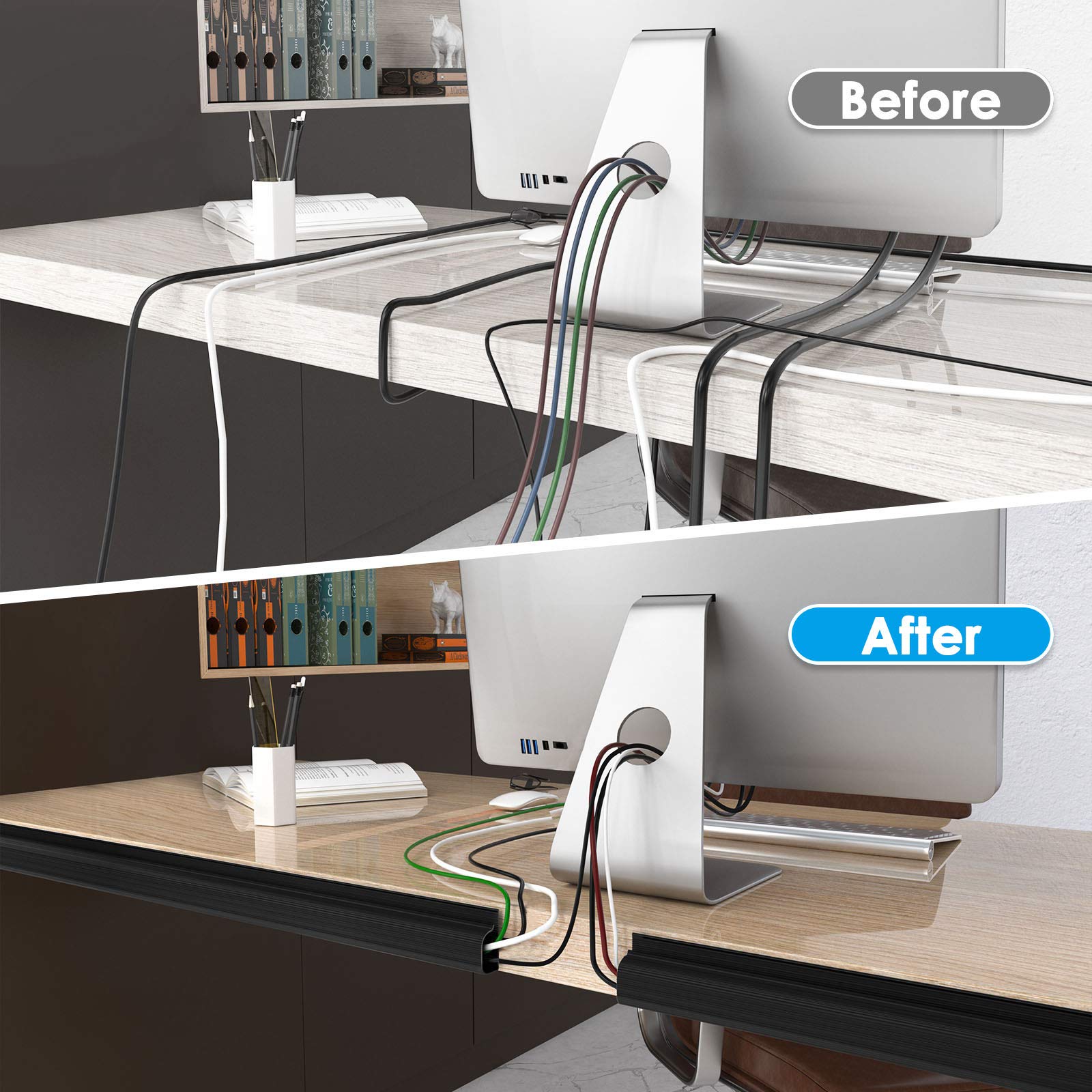 DIY Desk Cable Organizer Ideas
DIY Desk Cable Organizer Ideas
Organizing cables on a budget can be fun and creative. DIY solutions let you customize setups easily. Here are some inventive ideas for crafting your own desk cable organizers:
Use Binder Clips
Attach binder clips to the edge of your desk. Thread cables through the clip handles to keep them in place. This simple trick stops cables from sliding or tangling.
Create a Shoebox Cable Box
Transform an old shoebox into a cable box. Cut holes for cords and place power strips inside. It hides messy cables and keeps them accessible.
Repurpose Toilet Paper Rolls
Use empty toilet paper rolls to hold individual cables. Label each roll to distinguish cords easily. Stack them in a drawer or box for organized storage.
Build with Plastic Pipes
Cut small sections of plastic pipes to create cable holders. Arrange them on your desk in a decorative way. This keeps wires separate and prevents tangling.
Design a DIY Cable Sleeve
Use fabric or felt to make a cable sleeve. Stitch or glue it around a group of cords. This organizes cables while adding a personal touch.
Mount Command Hooks
Stick adhesive hooks under your desk to hold cables. Route cords through the hooks for a cleaner look.
Use Bread Clips for Labeling
Use plastic bread clips to label cables. Clip them onto cords near their ends for easy identification.
DIY desk cable organizers save money and personalize your workspace. Experiment with these ideas to keep your cables tidy.
Ready-to-Buy Cable Organizers for Every Budget
Finding the right desk cable organizer can be simple, regardless of your budget. There are many ready-to-buy options available that suit different needs and price ranges. Below are some great choices for every budget:
Budget-Friendly Options
- Cable Ties: Affordable and efficient, these keep cables grouped and organized neatly.
- Adhesive Cable Clips: Small and inexpensive, they stick to surfaces and route cables with ease.
- Plastic Cord Sleeves: Lightweight and low-cost, they hold multiple cables together.
- Simple Cable Boxes: Basic boxes to store power strips and tidy cords affordably.
Mid-Range Options
- Under-Desk Cable Trays: Designed to hold cables securely under the desk, freeing up workspace.
- Stylish Cable Holders: Functional and stylish options that match your workspace decor.
- Small Wire Management Channels: Great for concealing cables along walls or desk edges.
- Surge Protectors with Spaced-Out Outlets: Organize power cords and offer electrical safety.
Premium Choices
- Advanced Cable Management Stations: Include slots for cords, tablets, and phones for multifunctional use.
- High-End Cable Boxes: Feature durable designs and sleek finishes for a classy workspace.
- Elegant Cord Covers: Blend neatly with modern desks, adding a touch of sophistication.
- Customizable Desk Organizers: Tailored solutions to meet unique workspace needs.
Ready-to-buy cable organizers make tidying up easy. Choose options that fit your budget and preferences. With these tools, you can create a clean and organized workspace effortlessly.
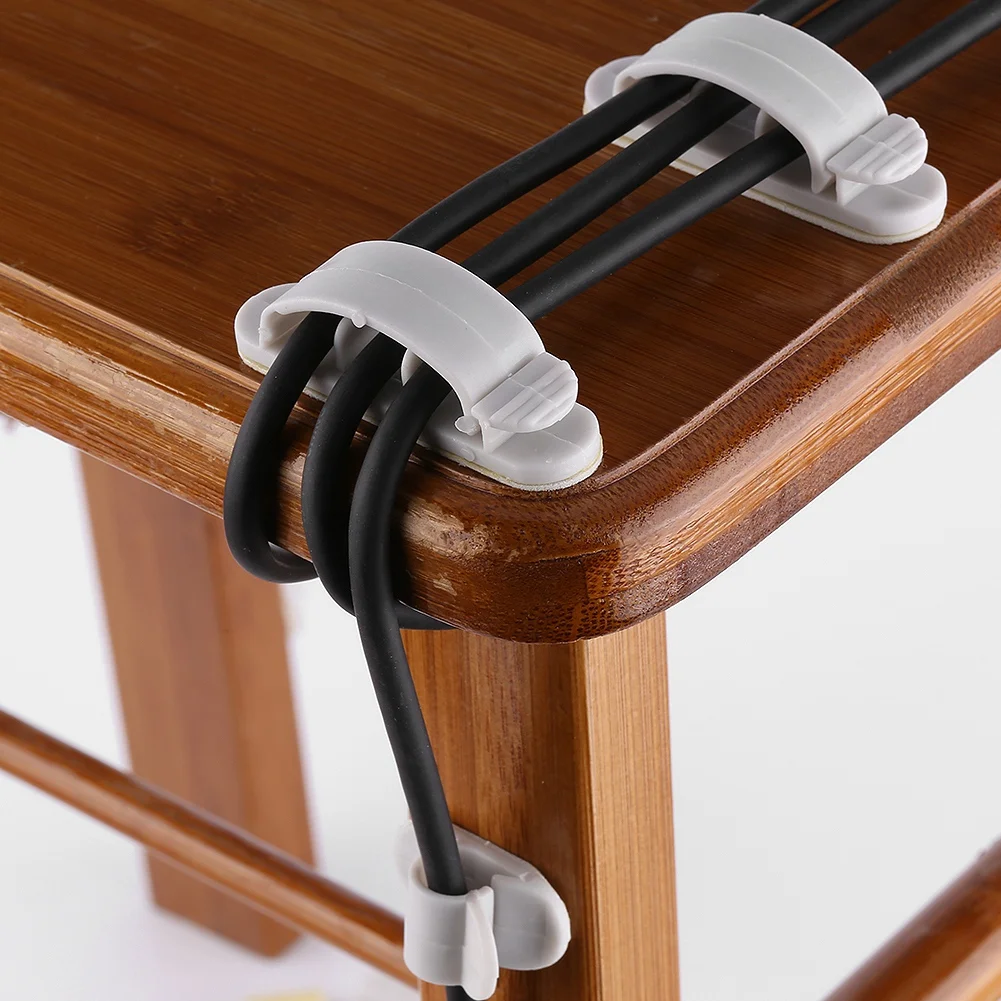 Tips for Hiding Cables on Workstations and Desks
Tips for Hiding Cables on Workstations and Desks
A clutter-free desk improves focus and creates a better working environment. Hiding cables is key to maintaining a neat and organized space. Here are some practical tips to conceal cables on your workstations and desks:
1. Use Cable Management Accessories
Invest in cable management accessories like cable trays, wire channels, and adhesive clips. These tools secure cables under the desk or along surfaces, keeping them out of sight.
2. Route Cables Behind Furniture
Position your workstation near walls or furniture to hide cables. You can route cords along the back of desks or shelves to minimize visibility.
3. Install Under-Desk Cable Trays
Attach cable trays under your desk to hold and conceal wires. This helps prevent tangling while freeing up desk space.
4. Bundle Cables Using Sleeves or Ties
Group cables together with cord sleeves or ties to reduce clutter. This makes them easier to manage and hide.
5. Mount Power Strips and Chargers
Fix power strips and chargers under your desk or at the back of your furniture. This eliminates messy cords lying on the floor.
6. Use Furniture with Built-In Cable Ports
Opt for desks or workstations with built-in cable management systems. These designs have ports or sections to keep cords organized and hidden.
7. Conceal Cables With Decorative Boxes
Store power strips and extra cable length in decorative cable boxes. These boxes keep wires out of sight while adding to your workspace’s aesthetic.
8. Stick Cords Along Desk Edges with Hooks
Adhesive hooks or clips can hold cables along the desk edges or underneath surfaces. This creates a clean, invisible setup.
9. Shorten Excess Cable Length
Use cord organizers or rubber bands to shorten long cables. Shortened cables are easier to hide and organize.
10. Invest in Wireless Devices
Whenever possible, choose wireless devices like keyboards and mice. This minimizes the number of wires on your workstation.
Applying these tips will help create a streamlined and visually pleasing workspace. Hidden cables not only enhance aesthetics but also contribute to better productivity and peace of mind.
Cable Management Solutions for Small Spaces
Small spaces require clever cable management to maximize functionality and aesthetics. Here are some practical solutions:
1. Use Compact Cable Organizers
Choose small-sized cable boxes, clips, or trays to fit tight spaces. These tools prevent clutter.
2. Mount Cables Vertically
Vertical mounting saves space. Use under-desk trays or adhesive hooks to secure cables up.
3. Invest in Multi-function Furniture
Opt for desks with cable management features. Built-in cable ports or trays are ideal for small areas.
4. Minimize Cable Usage
Switch to wireless devices when possible. This reduces the number of cables needed.
5. Bundle and Shorten Cables
Group cables together with ties or sleeves. Use shorter cables to avoid wasted space.
6. Create Hidden Storage
Use compact boxes or storage bins for hiding power strips and cable excess.
7. Route Cables Along Walls
Attach wires to the walls using hooks or channels. This keeps them out of the way.
8. Label and Organize Cords
Use small labels for easy identification. This ensures cables stay sorted and accessible.
9. Keep Power Strips Off the Floor
Mount power strips to the underside of desks or shelves. This frees up visible space.
10. Opt for Minimalist Designs
Avoid bulky solutions. Sleek and simple cable organizers work best in small workspaces.
These tips make small spaces efficient and visually appealing. Use compact solutions and proper tools to manage cables effectively.
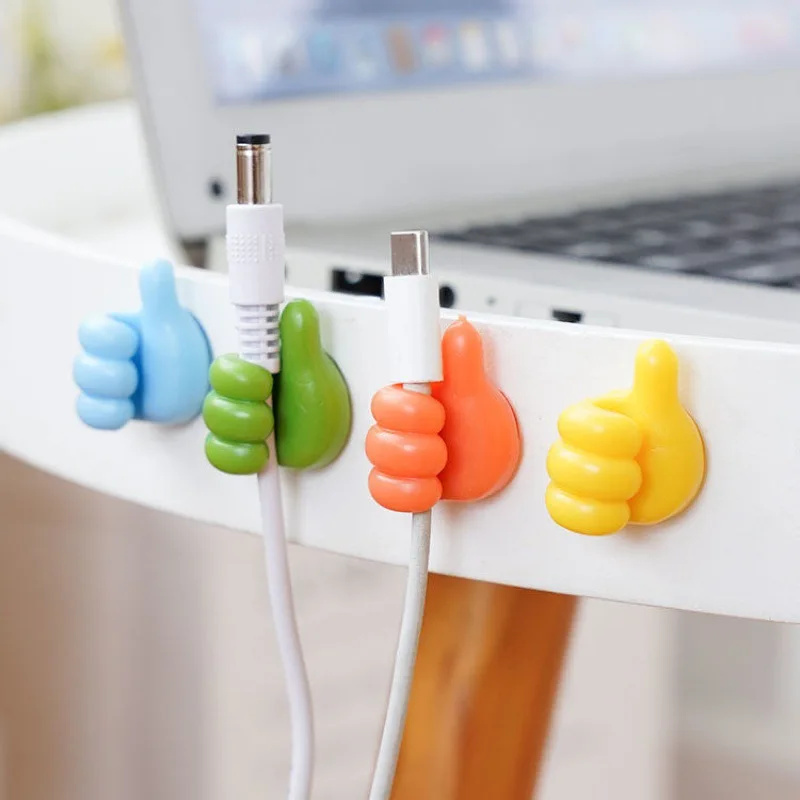 Maintaining a Tidy Workspace: Long-Term Strategies
Maintaining a Tidy Workspace: Long-Term Strategies
Keeping a workspace tidy requires consistent habits and effective strategies. Here are long-term tips:
1. Regularly Declutter Your Desk
Clear your desk of unnecessary items every week. Remove unused cables and devices.
2. Create a Labeling System
Label cables to identify them quickly. This saves time when unplugging or rearranging devices.
3. Stick to a Cleaning Schedule
Set a schedule to clean and organize your desk. Consistency keeps clutter under control.
4. Use Dedicated Storage Solutions
Invest in drawers, boxes, or trays. They help organize cables and accessories neatly.
5. Reassess Your Setup Periodically
Evaluate your workspace every month. Optimize cable management as your needs change.
6. Invest in Quality Cable Accessories
Choose durable organizers like cable ties, sleeves, or clips. They ensure lasting results.
7. Minimize Cable Usage
Adopt wireless devices when possible. Fewer cables make cleaning and organizing simpler.
8. Avoid Overloading Power Strips
Limit the number of devices plugged into one outlet. This reduces cable clutter and hazards.
9. Store Spare Cables Separately
Place extra cables in labeled boxes. Keep them away from your main workspace.
10. Educate Your Team or Family
If sharing the workspace, ensure everyone follows organizing rules. Collaboration maintains tidiness.
Practicing these habits ensures your workstation remains neat and functional. A tidy desk boosts focus and comfort.
Frequently Asked Questions
What is a desk cable organizer?
A desk cable organizer is a device or system designed to manage and organize the various cables and wires on your desk. It helps prevent clutter, protects cables from damage, and maintains a tidy workspace.
How do I choose the right desk cable organizer for my needs?
Consider factors such as the number of cables you need to manage, available desk space, preferred material, ease of installation, and aesthetic preferences. Assessing your specific requirements will help you select the most suitable organizer.
Can desk cable organizers accommodate wireless devices?
Yes, many desk cable organizers are designed to work with wireless devices by providing designated spaces for charging stations, USB ports, and other accessories that support wireless connectivity.
Are there eco-friendly options for desk cable organizers?
Absolutely. Look for organizers made from recyclable materials, durable products that reduce waste, and brands that prioritize sustainable manufacturing practices.
How do I maintain my desk cable organizer?
Regularly check for any signs of wear, clean cables and organizers to prevent dust buildup, and adjust the system as needed to accommodate new devices or changes in your workspace.
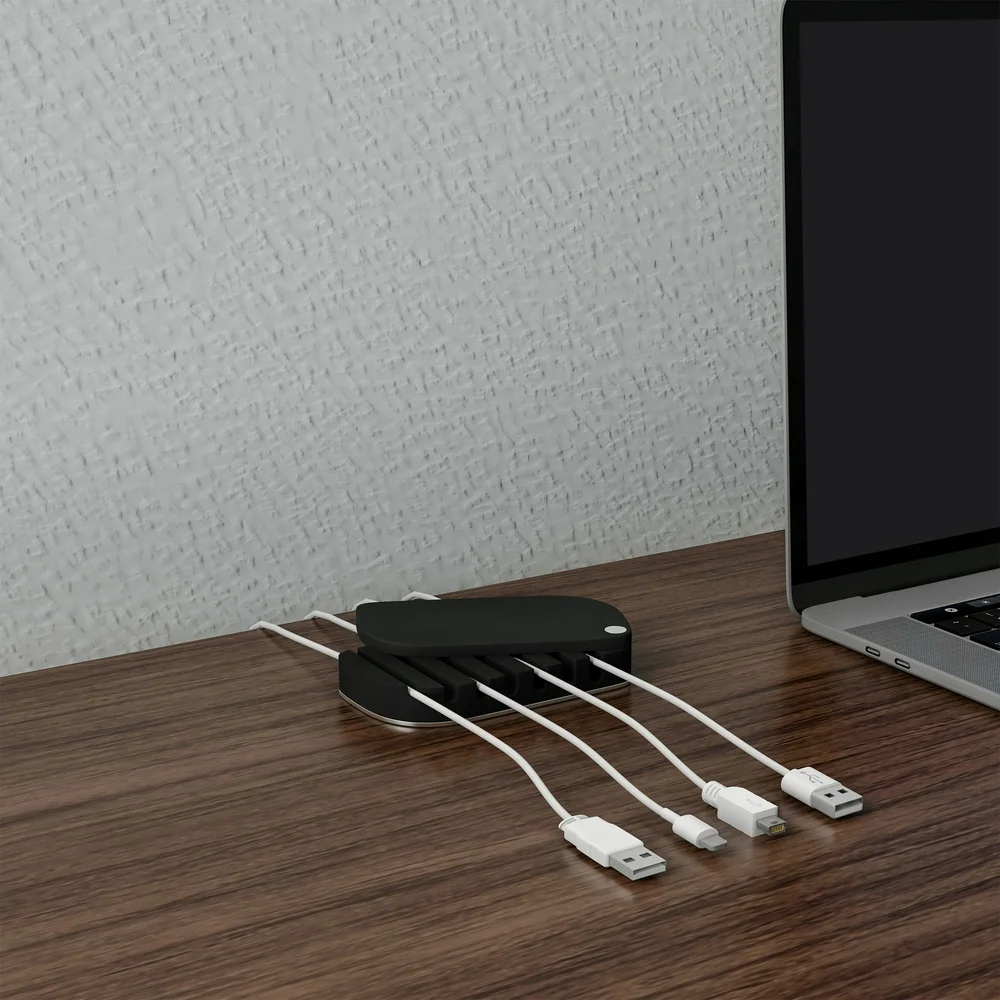 Conclusion
Conclusion
A desk cable organizer is an essential tool for anyone looking to create a neat, efficient, and productive workspace. By effectively managing your cables, you can enhance the aesthetics of your desk, improve your workflow, and ensure the longevity of your electronic devices. Whether you choose a cable tray, clips, sleeves, or a combination of these solutions, investing in a desk cable organizer will transform your workspace into a clutter-free haven. Embrace the benefits of organized cables and experience a more focused and enjoyable working environment every day.